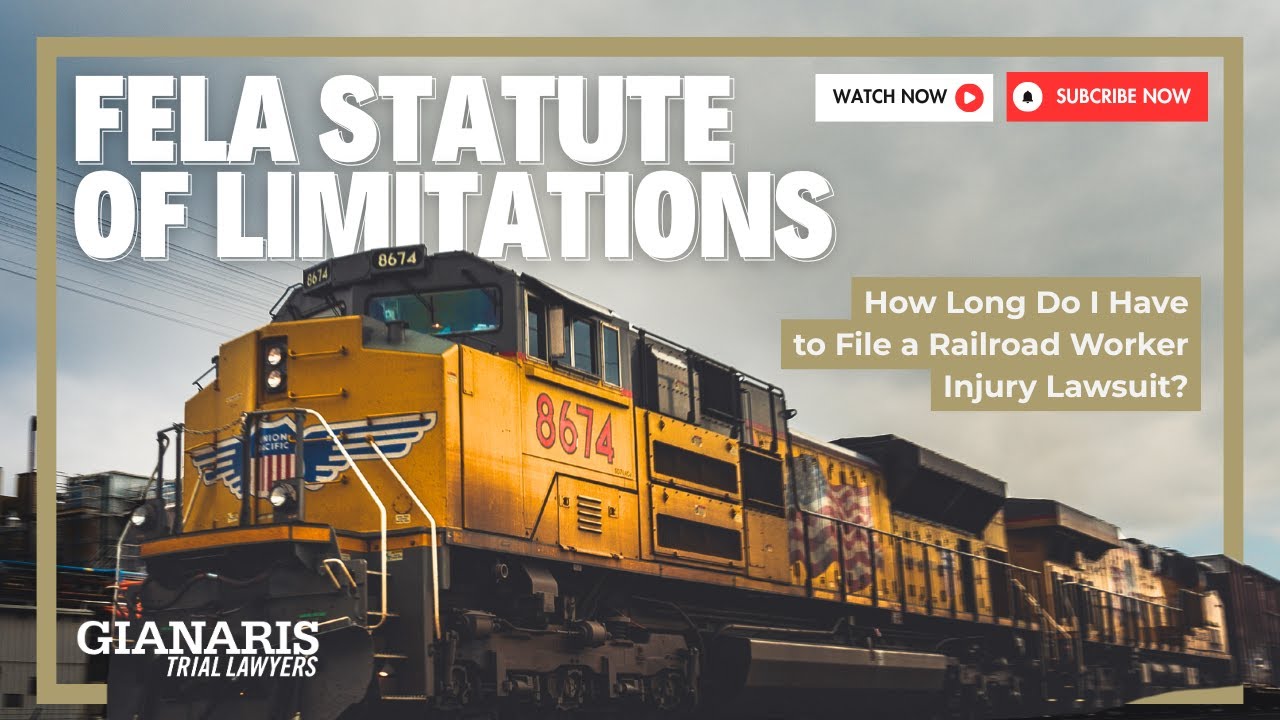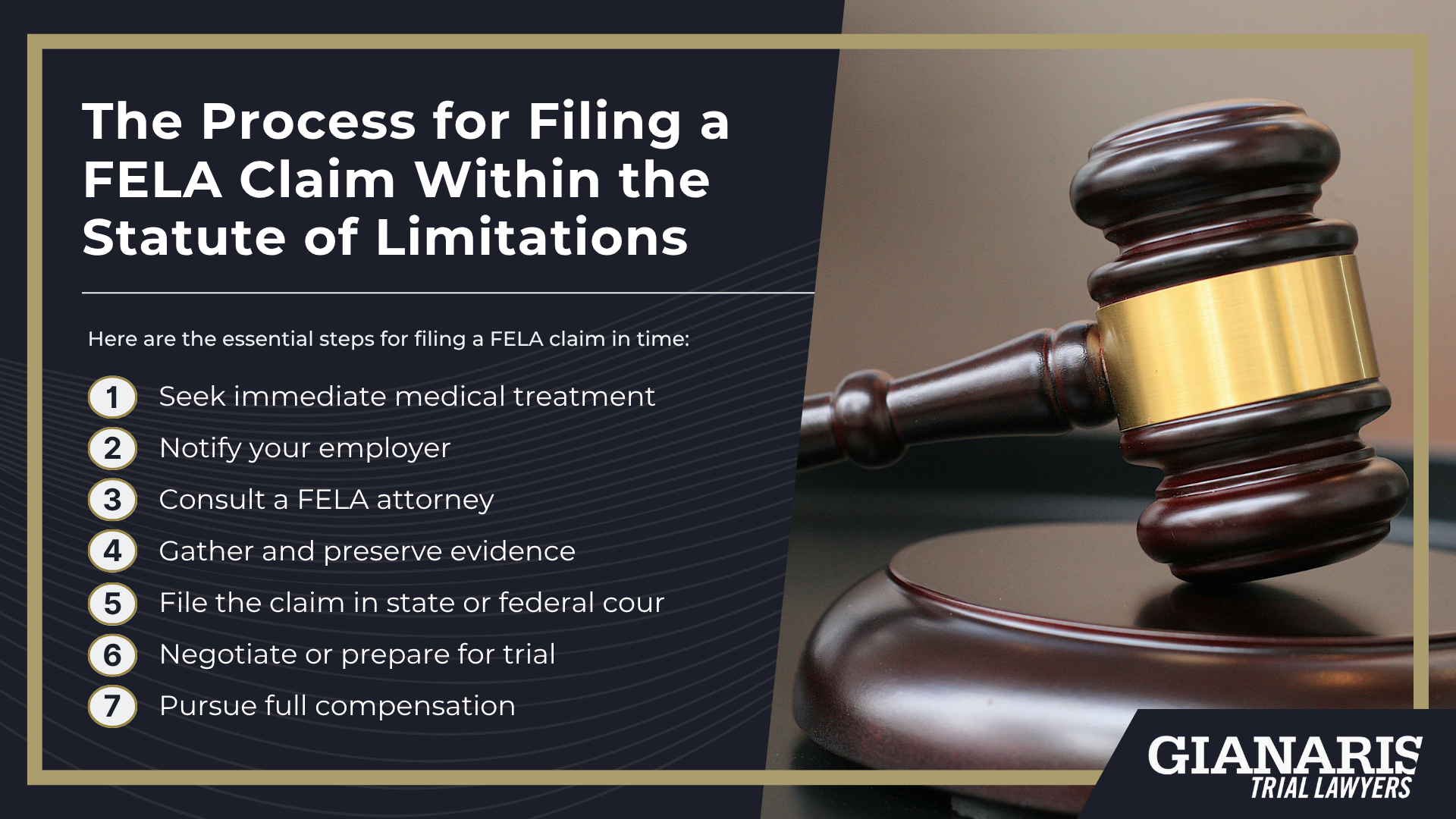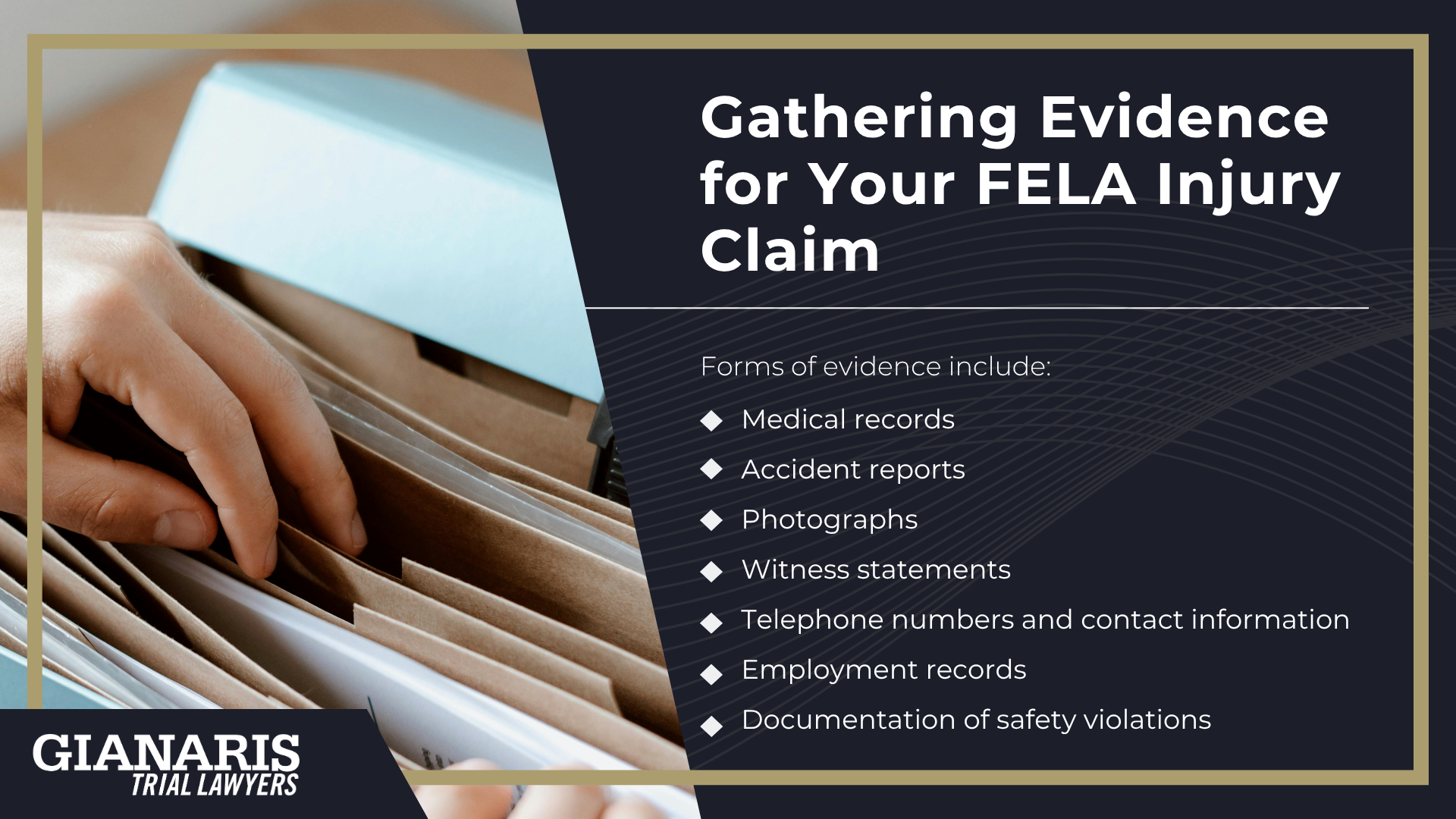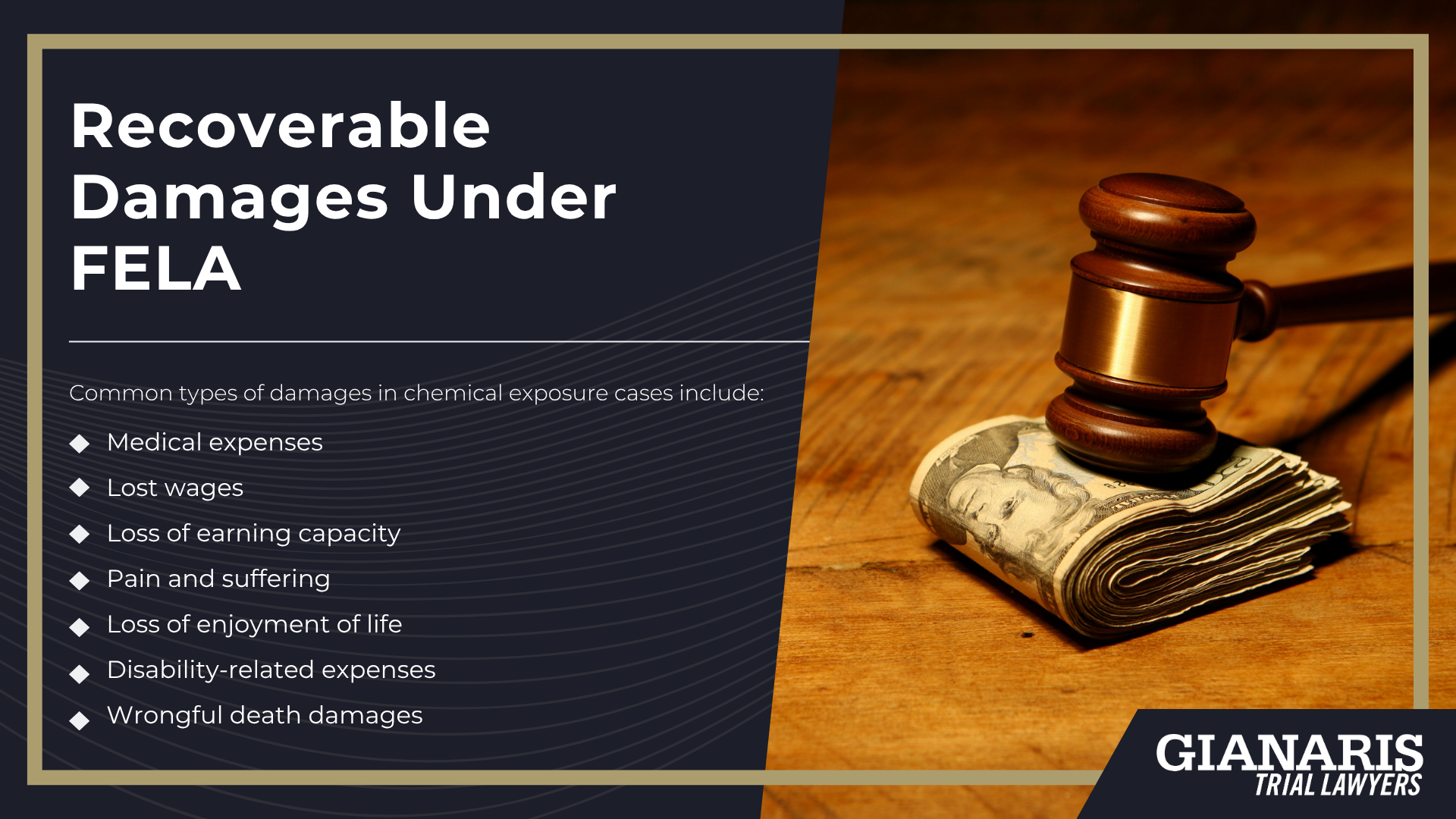The Federal Employers Liability Act (FELA) is a federal law created to protect workers in the railroad industry who suffer injuries due to their employer’s negligence.
Unlike traditional workers’ compensation systems, FELA allows injured workers—or their personal representative the event the worker is killed—to file a lawsuit directly against the railroad employer.
To maintain your right to benefits under FELA, you must file the claim within three years of the injury or the point at which the injury or illness should reasonably have been discovered.
This rule also applies in occupational disease cases, such as cancer caused by asbestos or diesel exposure, where symptoms may appear years after employment ends.
For wrongful death cases, the claim must also be filed within three years of the worker’s passing, with the lawsuit brought by a qualified personal representative on behalf of the deceased.
FELA claims can be brought in either state or federal court, offering flexibility not typically available in state-level workers compensation programs.
In some cases, especially those filed in certain states, local procedural rules may influence how evidence is gathered and presented.
FELA also differs in that it follows a comparative negligence model rather than a no-fault system.
This means if an injured railroad worker is found partially responsible for the accident, their award may be reduced in proportion to their share of fault—but they are not barred from recovery entirely.
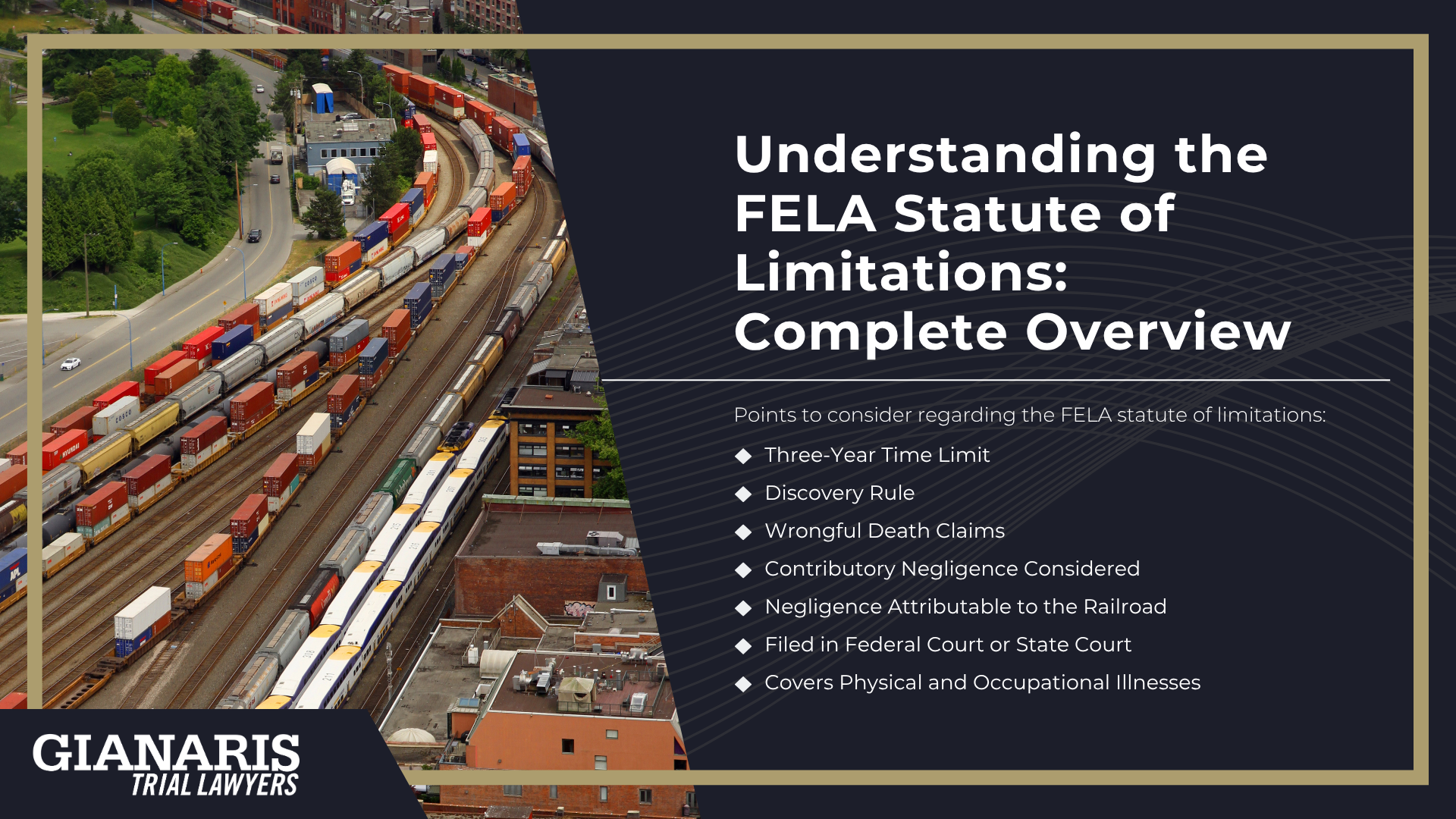
Points to consider regarding the FELA statute of limitations:
- Three-Year Time Limit: The claim must be filed within three years of the date of the accident or discovery of a work-related illness.
- Discovery Rule: In cases involving toxic exposure or cumulative trauma, the time limit begins when the worker knew or should have known the condition was work-related.
- Wrongful Death Claims: A personal representative must bring the claim within three years of the date the worker was killed.
- Contributory Negligence Considered: FELA reduces compensation in proportion to the injured worker’s own role in the incident but does not eliminate recovery.
- Negligence Attributable to the Railroad: The plaintiff must show that negligence attributable to the railroad employer contributed, even slightly, to the injury.
- Filed in Federal Court or State Court: Depending on strategic preference and jurisdiction, claims may be filed in either venue.
- Covers Physical and Occupational Illnesses: Injuries may arise from defective equipment, poor working conditions, or exposure to toxic substances.
Failing to file within the specified timeframe can result in the loss of the right to seek compensation.
It’s imperative for injured railroad workers or their families to act promptly and seek legal counsel to protect their rights under this federal law.
When Does the FELA Statute of Limitations Begin?
Under the Federal Employers Liability Act (FELA), the standard statute of limitations is three years—but exactly when that period begins depends on the nature of the injury or illness.
For injuries caused by a single traumatic event—such as a derailment, fall, or equipment failure—the three-year clock typically starts on the date the accident occurred.
In these cases, the injury is immediate and apparent, and the filing deadline is straightforward.
However, for occupational diseases or cumulative trauma—such as lung cancer from diesel exhaust, mesothelioma from asbestos, or repetitive stress injuries—the start of the limitations period is governed by what’s known as the “discovery rule.”
This means the three years begin when the worker knew or reasonably should have known that their condition was related to their railroad employment.

For example, if a former railroad worker is diagnosed with kidney cancer in 2024 and medical evidence links the cancer to long-term benzene exposure during their career, the statute of limitations would begin at the point of diagnosis, not when the exposure originally occurred.
This flexibility helps protect workers who suffer from illnesses with long latency periods and may not show symptoms until years after exposure ends.
It’s important to note, however, that courts will assess what a “reasonable person” in the worker’s position would have known, so delays in seeking medical attention or ignoring symptoms can complicate claims.
Determining the exact starting point of a FELA statute of limitations requires a fact-specific analysis.
If you’re unsure when your claim period began—or if a deceased loved one may have been affected—it is essential to speak with a FELA attorney immediately to protect your right to recovery.

